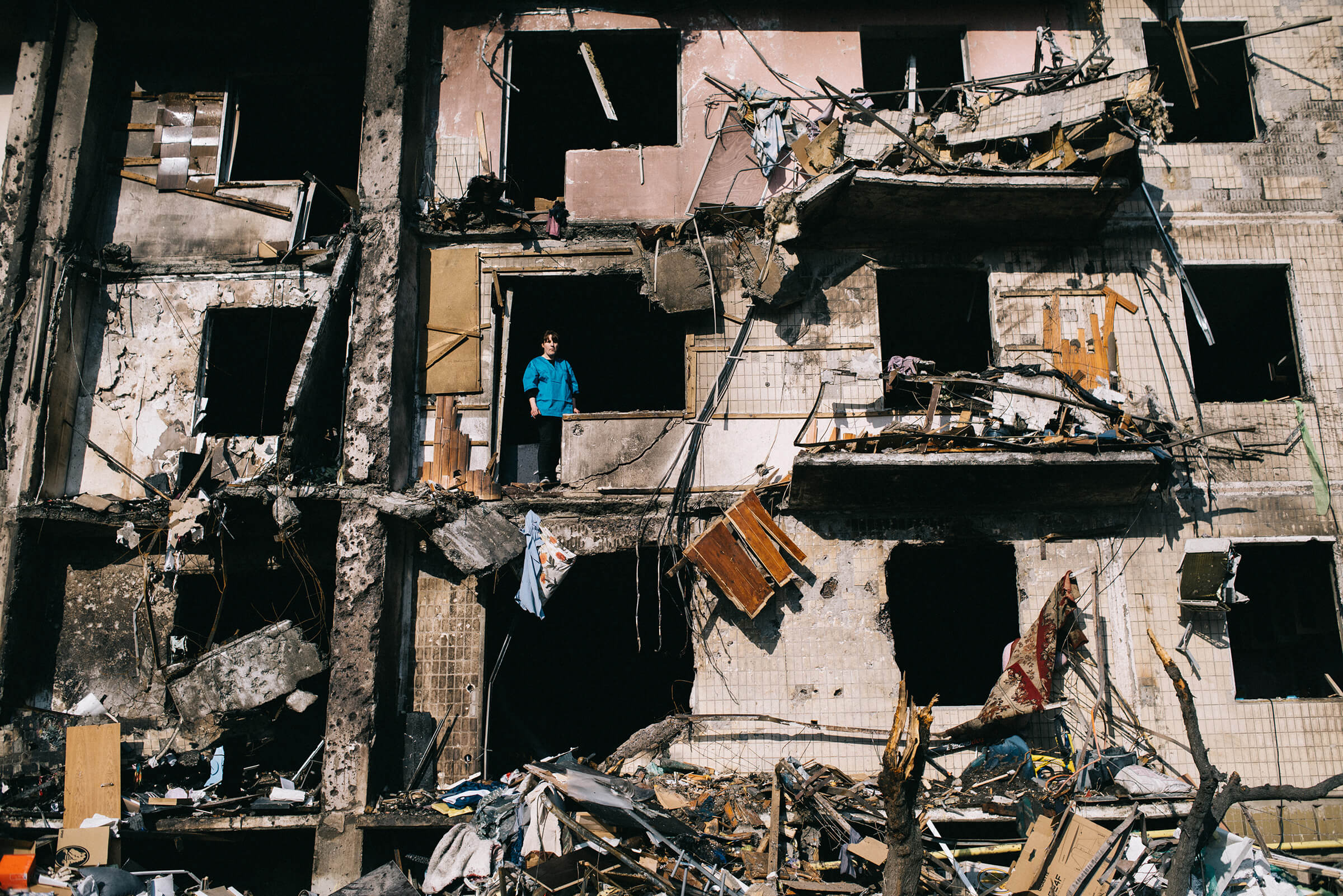Civilian Harm Mitigation: An Opportunity for Values-Based U.S. Leadership at NATO

Published by The Lawfare Institute
in Cooperation With

A new push by the U.S. Department of Defense to implement a proactive and pragmatic strategy for addressing civilian harm mitigation and response (CHMR) provides a unique opportunity to lead by example while supporting U.S. allies at the North Atlantic Treaty Organization (NATO) as it implements its new approach to human security. The implications of the new U.S. momentum for NATO may be far reaching as several of the Defense Department’s objectives lay out requirements for U.S. allies that will ultimately force NATO to consider how it will apply civilian harm mitigation (a key tenet in NATO’s 2016 Policy for Protection of Civilians) in future operations. It will necessitate determined U.S. leadership and intentional support to reinforce and build on these commitments and to ensure the benefits of the new program extend to NATO allies and across alliance activities.
Background
As CNA’s Larry Lewis writes in a forthcoming paper, CHMR is a systematic and focused approach to identifying and reducing risks to civilians from military operations to the maximum extent feasible and proactively responding when harm does occur. Promoted by the United States and developed and refined by NATO during the International Security Assistance Force (ISAF) mission in Afghanistan, the approach was a response to unacceptably high civilian casualties during kinetic operations against the Taliban.
In 2007, the U.N. Assistance Mission in Afghanistan reported that civilian casualties in Afghanistan were rising. ISAF wasn’t tracking civilian casualties—let alone conducting lessons learned to mitigate them—nor was it responding systematically and proactively. Initially, airstrikes were the main culprit. So in September 2007, ISAF commander Gen. Dan McNeill issued the first tactical directive to mitigate civilian deaths by restricting airstrikes. However, it wasn’t until a 2008 special operations forces raid in Azizabad—during which nearly 100 Afghan civilians died, and a sharp rebuke from the Afghan government followed—that NATO took a series of proactive measures that, together, would start to resemble what we now call CHMR. For instance, ISAF created a Civilian Casualty Tracking Cell, later renamed the Civilian Casualty Mitigation Team to track civilian harm incidents, conduct investigations at incident sites, analyze root causes, and recommend how best to mitigate and respond to incidents. The subsequent ISAF commander, Gen. Stanley McChrystal, built on this a year later with tactical directives that emphasized the operational imperative of protecting Afghan civilians. The results were impressive: By 2010, civilian casualties in Afghanistan dropped by 20 percent, with deaths from airstrikes down over 60 percent.
Unfortunately, when the ISAF mission transitioned to Resolute Support, which aimed to assist Afghan National Defense and Security Forces (ANDSF) in the primary combat role, they shed several of the ISAF civilian harm mitigation measures. Unsurprisingly, civilian deaths in Afghanistan rose in 2019 to the highest ever recorded, with combined coalition and ANDSF airstrikes accounting for approximately 700 Afghan civilian deaths. Unfortunately, the absence of an effective CHMR approach—or at least the failure to capture and retain approaches that were working—demonstrated how military operations that caused civilian casualties could undermine the mission on and off the battlefield in the efficacy of strikes and the court of public opinion.
Institutional change took a little longer. In late August 2021, as U.S. forces raced to airlift civilians out of Afghanistan, an airstrike near Kabul’s airport killed 10 Afghan civilians, including seven children, which prompted a more fundamental reconsideration of the U.S. approach to CHMR. While advocates had been calling on the Defense Department for more than a decade to establish standing capabilities within the structure to mitigate harm, it took a tragedy—which was well documented on open-source media—to move the needle.
On Jan. 27, 2022, Secretary of Defense Lloyd Austin issued a memo promising to improve how the U.S. military protected civilians. Austin’s initiative will result in a new Department of Defense instruction to establish the first ever department-wide policy on civilian harm. Additionally, Austin called for creating a Civilian Protection Center of Excellence, a standardized civilian harm data management system, and a method to acknowledge the harm and offer amends for harm caused during lawful military operations. Finally, he directed CHMR to become part of U.S. military doctrine. These initiatives culminated on Aug. 25, 2022, in the Civilian Harm Mitigation and Response Action Plan (CHMR-AP), which noted that the protection of civilians is both a strategic and a moral imperative. The plan’s significance was validated further by its warm reception among the nongovernmental organization community, which views it as a dramatic improvement in how the Defense Department deals with civilian harm. The department instruction is expected to be released in the first quarter of 2023 and will enshrine the CHMR-AP into policy.
The CHMR-AP will create a significant structure and staff to protect civilians from U.S. military operations. Consisting of 11 objectives, the phased plan will add approximately 166 professionals across the U.S. military and intelligence communities to ensure they consider the civilian environment in military planning and operations across the full range of military commands. Notably, it will operationalize civilian protection by embedding CHMR within the joint targeting process so that it is considered during all aspects of operations and is not confined to a purely civil-military frame. Further, it will reform the conduct of poststrike investigations to ensure that lessons inform future operations and are not just historical studies. Finally, and most important for the NATO alliance, the plan calls for all U.S. allies to “establish guidance, responsibilities, and processes for incorporating civilian harm mitigation and response during all phases of multinational operations.”
NATO’s Human Security Evolution
NATO is a values-based organization. As demonstrated by its political track record over the past seven years, respect for life and civilian protection during conflict and crises is a cornerstone of those values. At NATO’s July 2016 Warsaw Summit, the North Atlantic Council endorsed a formal NATO Policy for Protection of Civilians. Soon followed an action plan with clearly defined activities for implementation and a military concept that outlined a framework to build NATO military capabilities. The concept included four key principles: develop an understanding of the human environment, seek actively to mitigate harm, facilitate access to basic needs, and contribute to a safe and secure environment. All of these initiatives help set a baseline for the alliance to take the issue seriously and transform the momentum into identifiable outcomes. In addition to Afghanistan, there were other vivid experiences of civilian harm at missions in the Balkans, Libya, and Iraq, along with vigorous advocacy through other international forums. These demonstrated the importance to the alliance of a robust approach to the protection of civilians and highlighted best practices for pulling various strands together into a coherent, consistent, and integrated approach that future NATO and NATO-led operations and missions could apply.
Over the past few years, NATO has broadened its focus on the protection of civilians to a larger human security frame that pulls together various nonmilitary security themes that it calls “cross-cutting topics.” Along with civilian protection, these themes include children in armed conflict, conflict-related sexual and gender-based violence, combating human trafficking, and cultural property protection. Together, these themes work alongside the priority that NATO has placed on taking an active leadership role in the Women, Peace, and Security agenda over the past decade.
NATO fully enshrined its approach to human security in 2022 with an essential trifecta of documents. First, NATO leaders at the June Summit in Madrid stated in their concluding declaration, “We emphasize the centrality of human security” and then outlined that it would be integrated across NATO’s core tasks. Second, NATO’s leaders also endorsed a new Strategic Concept or blueprint for NATO’s role and identity that emphasized “the cross-cutting importance of investing in [and promoting]…human security across all our core tasks.” And finally, in October, NATO released an Approach and Guiding Principles for Human Security that starts by saying, “The notion of human security directly links NATO’s common values of individual liberty, human rights, democracy and the rule of law to NATO practice.” It goes on to outline NATO’s goals and guiding principles in this area and indicates an abiding commitment to implementation. These initiatives set NATO on a path toward an enduring commitment to putting people first.
The Nexus
Given the alliance’s commitment to human security, how might the fresh and robust U.S. approach to tackling civilian harm mitigation intersect and interact with NATO’s work? As a key ally, the U.S. example provides ample guidance and impetus for other allies and partners interested in operationalizing civilian protection. As noted above, the U.S. plan explicitly expects its implementation to involve allies and partners. But there are particular implications for how the alliance can leverage its activities most effectively. One key challenge is that the U.S. approach takes a narrower view of civilian protection, confining it to harm mitigation from own actions while NATO’s approach addresses mitigating harm from others’ actions as well. For NATO, this is particularly important in light of evidence from current conflicts in which allies are likely to face an adversary that intentionally targets NATO’s own citizens for strategic effect. Nevertheless, it energizes several possible areas for further alliance efforts.
The United States should be briefing allies on the CHMR-AP as well as its expectations and needs to solicit NATO member states for input leading to the integration of CHMR into NATO doctrine. The U.S. should also work with allies to support bilateral or multinational operations similarly.
A specific, more operational need is NATO’s use of the joint targeting process, which is historically based on U.S. targeting doctrine to ensure interoperability. The new policy will likely require NATO to consider CHMR and apply it as part of the targeting cycle. This is to ensure that the lessons learned from this process inform and develop future operations and responses to incidents. When the United States implements the CHMR-AP in its policy and doctrine, it may require NATO to update its targeting process to harmonize with the new U.S. requirements for multinational operations. This is a discussion that needs to happen sooner rather than later.
The envisioned U.S. Civilian Protection Center of Excellence should provide the alliance with a one-stop shop for interfacing with civilian harm best practices. It should contain a NATO element—including a NATO liaison—to provide the alliance with the latest guidance on CHMR. With this in mind, the physical location of the center is of importance for NATO member states, and they should advocate for its location in Europe to ensure greater allied ownership and engagement. A NATO dimension to the center will further cement the critical nature of CHMR for all member states, particularly in the case of a large-scale combat operation that triggers a collective response on NATO territory.
Russian targeting of civilians in Ukraine demonstrates the need for innovative and proactive thinking on the protection of civilians and the strategic and moral danger to operations should civilians be unduly harmed. One reason for Russia’s failure to protect civilians in its attacks is its blatant disdain for protecting them, which has cost the country what little moral ground it had, and increased resistance from the population and Ukrainian forces. From the beginning of the invasion, Russian forces targeted civilians in “cleansing operations” and have used indiscriminate weapons like cluster bombs to create massive casualties in direct contravention of international law as civilian casualties have become a Russian tactic in the war. As the CHMR-AP notes, a premise on mitigating harm to civilians is not solely for counterinsurgency but is scalable and applicable to large-scale combat operations as well.
Allies are taking notice of what the United States is doing to ensure civilian protection. Most national delegations we met with last autumn in Brussels asked about the CHMR-AP. Actions from other allies are likely to follow. For example, the Dutch have already taken steps—unrelated to the U.S. process—to adopt some aspects of CHMR. On April 7, 2022, Dutch Minister of Defence Kajsa Ollongren issued a 10-point plan to the Dutch Parliament to apply aspects of CHMR, including transparent reporting on civilian harm incidents, and strengthening internal military tactics, techniques, and procedures, while providing for monitoring, evaluation, and accountability. They also created a protection of civilians team within the Ministry of Defence’s Directorate of International Affairs to manage the Dutch work on CHMR. While not part of the U.S. CHMR-AP, these first steps provide a positive example of how NATO member states are studying and applying CHMR. NATO would do well to contemplate the U.S. CHMR-AP and develop ways to echo the guidance and integrate it into future mission planning. As NATO continues to focus on operationalizing civilian protection, this is a timely and key aspect to ensure the alliance meets its obligations to protect civilians and is ready to implement the latest requirements in planning, operations, and response.
To be successful, NATO will also need to develop its reporting and information-sharing protocols on CHMR. This process is particularly critical for countries that are not part of the Five Eyes intelligence partnership and must be harmonized across the alliance, so that sharing of information on the civilian environment happens as equally and openly as possible. This would allow each ally to make the best decisions in line with national caveats and concerns. NATO should reach back to members of ISAF’s Civilian Casualty Mitigation Team to learn best practices and how they developed alliance-wide reporting standards in Afghanistan on civilian harm. Frankly, it is surprising NATO never produced a report analyzing the successes and challenges faced by the ISAF team—publishing such an analysis would be a good step in this process.
Finally, NATO must work with the United States to identify steps to incorporate CHMR during all phases of NATO missions. This could include specific proposals lifted from the U.S. plan, such as requiring more affirmative steps ahead of a potential conflict to map civilian locations and patterns of life, and increased red-teaming against certain types of actual or potential targeting decisions. In addition, while the NATO civilian protection policy may apply only to NATO operations, it is important that allies adopt and exhibit this capability outside of NATO missions in any coalition missions they undertake. The United States and other allies can go a step further to provide concrete indications to others in and near a battlefield about what they can do to cooperate or align with U.S. and ally intentions and plans. NATO’s civilian protection efforts have a recent history of informing how seriously alliance member states take the issue of civilian harm. Last year, 23 NATO member states (including the United States)—over two-thirds of the alliance—signed a political declaration requiring states to minimize the use of explosive weapons in populated areas and to assist victims and communities during and after conflict. These efforts align well with the CHMR-AP and serve as another example of how the war in Ukraine has informed how important protection of civilians has become in modern conflict. The CHMR-AP is the first time the U.S. military has attempted to address the long-term reverberating effects of civilian harm, and this is clearly an issue NATO is dealing with—as are its member states outside alliance parameters, as exemplified by the 2022 political declaration on the use of explosive weapons in populated areas.
In 2022, NATO allies put a firm stamp on a commitment to prioritize human security in alliance doctrine, training, and operations. Now, the challenge will be to collaborate with and leverage the momentum from the U.S. CHMR-AP while not confining its ambitions to the more narrowly focused U.S. agenda. This moment provides an opportunity for NATO to operationalize its human security agenda and specifically its Policy for Protection of Civilians.






